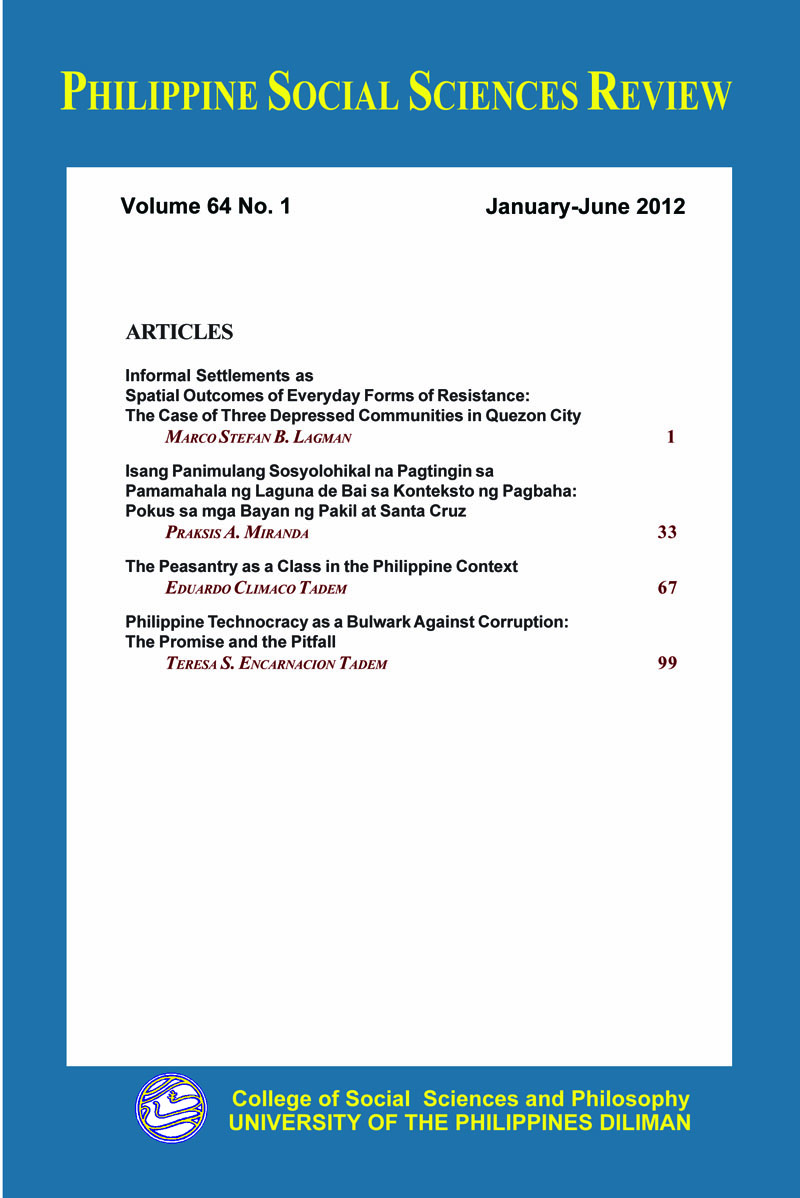Informal Settlements as Spatial Outcomes of Everyday Forms of Resistance: The Case of Three Depressed Communities in Quezon City
Abstract
Informal settlements in the past decades have become ubiquitous features of the Philippine urban landscape that are commonly perceived in a negative light in Filipino popular culture. This paper puts forward a countervailing argument that more than being places of blight and despair, these communities, in reality, can not only be considered as the product of the urban poor’s need to access a scarce resource (i.e., living space) but also as spatial outcomes of a disadvantaged group’s continuing resistance against the state and the more socioeconomically advantaged sectors, particularly with respect to how resources in society should be distributed. Through key informant interviews and field observations in the informal settlements of Lookan, Mehan and Labrador1 in Quezon City, I argue that the methods employed by the residents of informal communities enable them to appropriate for themselves urban space that they do not legally own, and in the process utilize, develop, manage, and protect these usurped lands into viable spaces for living. Moreover, residents make a living in the areas they occupy without either the approval of its legal owners or the direct supervision and management of the state. These strategies reflect characteristics that are similar to activities that political scientist James C. Scott (1985) has classified as “the weapons of the weak” or the “everyday forms of resistance” of marginalized groups and adds a geographic component to the said paradigm.
Published
2012-12-11
Section
Articles
Keywords
geography, urban communities,


